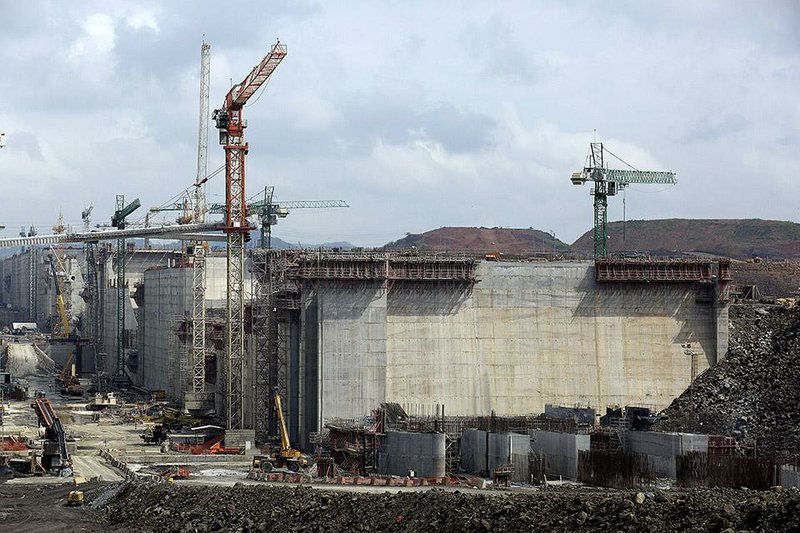MIAMI -- Two more Caribbean ports have tossed their hats into the ring as potential transshipment hubs that will be able to handle the larger post-Panamax ships, which will begin transiting the Panama Canal in early 2016.
Officials from Port Lafito, a private port under development in Haiti, and Puerto Rico's Port of the Americas outlined their plans during the 38th annual conference on the Caribbean and Central America in Miami last week.
The Haitian port will be the deepest in the country with a draft of 41 feet, which isn't deep enough to handle a post-Panamax ship. But a second phase with a shipping channel that would potentially be 52-56 feet deep is under consideration, said Pierre Liautaud, a Port Lafito board member.
The Puerto Rican port in Ponce is big-ship-ready with a draft of nearly 50 feet. Port officials would like to see the Port of the Americas become a major global shipping hub in coming years and are currently looking for an international port operator to run it.
But the seas are already crowded with ports -- both in the United States and the Caribbean -- that want deep water to capitalize on the expansion of the Panama Canal, which will allow the passage of ships that can carry three times as many containers as the Panamax ships that now use the canal.
Billions of dollars of investment in new ports and port improvements have been made throughout the region or are being contemplated in this race for deep water.
PortMiami is currently dredging its shipping channel to a depth of 50-52 feet and will be the first U.S. East Coast port south of Norfolk, Va., with water deep enough to handle a fully loaded post-Panamax ship.
But not everyone is convinced this part of the world needs so many deep-water ports.
While any country with a coast needs a port that runs with relative efficiency, "we have too many ports in the Americas and there are too many ports that are developing container capabilities beyond what will ever be needed," said Richard Wainio, former chief executive of the Tampa Port Authority. "There will be winners and losers."
The Lafito container port is part of a larger development project that includes an industrial zone; business park; a residential and commercial area; and an ocean club with a boutique hotel, beach club and marina.
In Haiti, ports are "the hearts and lungs," of the economy, Liautaud said. Port Lafito, which is scheduled to open in early 2015, will be managed by SSA Marine. Located north of the capital of Port-au-Prince, it's a 25-minute drive from the international airport.
Haiti has a long history of light manufacturing and garment assembly, and the Lafito Global complex hopes to spur economic development and help revive the assembly industry.
Ports throughout the Caribbean and Central America, including Panama itself, want to serve as transshipment hubs for the region. "Transshipment is good but you have to move a lot of cargo to make money," he said. "Maybe some of the islands won't be getting 10,000-TEU vessels because there is no need."
The largest ships that can now fit through the canal have a capacity of 5,000 TEU's -- equivalent to 5,000 standard 20-foot containers.
But Puerto Rico's Port of the Americas wants to be in the race -- even though it has been a long time coming.
Planning for the Ponce port, which was envisioned as an important economic engine for the entire island, began about 15 years ago and ran into various political and regulatory obstacles.
But after an investment of nearly $300 million in public funds to upgrade the port, "now Puerto Rico is ready," said Carlos Mejia, executive director of the Port of Ponce.
Mejia said the port, which has two post-Panamax cranes and 4,400 linear feet of quayside, is now prepared "for the game-changer the opening of the expansion of the Panama Canal will be in the region. But he he added, "We know competition will be even fiercer than expected."
To get started, Mejia said, the Port of the Americas will need to begin with domestic cargo and then try to develop transshipment business and encourage establishment of maritime-related industries near the port.
But Wainio said the Ponce port will face competition from ports such as Freeport, Bahamas, and Kingston, Jamaica, that already have built transshipment businesses and are closer to major shipping routes than Puerto Rico in the eastern Caribbean.
"The lion's share of transshipment for the region will go through Panama and Cartagena, Colombia," he added.
Business on 11/29/2014
